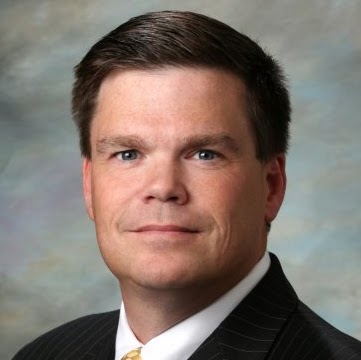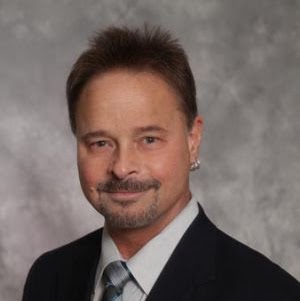Robert D Reams
age ~70
from Yakima, WA
- Also known as:
-
- Robert Dean Reams
- Robert Reames
Robert Reams Phones & Addresses
- Yakima, WA
- Lakewood, WA
- Mill Creek, WA
- 12323 120Th Avenue Ct E, Puyallup, WA 98374
- Killeen, TX
- Everett, WA
- Sumner, WA
- Harrogate, TN
Name / Title
Company / Classification
Phones & Addresses
Director
Neural Nv, Inc
11410 NE 122 Way, Kirkland, WA 98034
Resumes

Robert Reams
view sourceUs Patents
-
Audio Spatial Environment Engine
view source -
US Patent:7853022, Dec 14, 2010
-
Filed:Oct 28, 2005
-
Appl. No.:11/262029
-
Inventors:Jeffrey K. Thompson - Bothell WA, US
Robert W. Reams - Mill Creek WA, US
Aaron Warner - Seattle WA, US -
International Classification:H04R 5/00
H04B 1/00 -
US Classification:381 17, 381 18, 381 19, 381 23, 381119
-
Abstract:An audio spatial environment engine for flexible and scalable up-mixing from an M channel audio system to an N channel audio system, where M and N are integers and N is greater than M, is provided. The input M channel audio is provided to an analysis filter bank which converts the time domain signals into frequency domain signals. Relevant inter-channel spatial cues are extracted from the frequency domain signals on a sub-band basis and are used as parameters to generate adaptive N channel filters which control the spatial placement of a frequency band element in the up-mixed sound field. The N channel filters are smoothed across both time and frequency to limit filter variability which could cause annoying fluctuation effects. The smoothed N channel filters are then applied to adaptive combinations of the frequency domain input signals and are provided to a synthesis filter bank which generates the N channel time domain output signals.
-
Parametric Stereo Conversion System And Method
view source -
US Patent:8385556, Feb 26, 2013
-
Filed:Aug 15, 2008
-
Appl. No.:12/192404
-
Inventors:Aaron Warner - Seattle WA, US
Jeffrey Thompson - Bothell WA, US
Robert Reams - Mill Creek WA, US -
Assignee:DTS, Inc. - Calabasas CA
-
International Classification:H04R 5/00
H04R 1/40 -
US Classification:381 23, 381 21, 381 97, 381106
-
Abstract:A system for generating parametric stereo data from phase modulated stereo data is provided. A phase difference system receives left channel data and right channel data and determines a phase difference between the left channel data and the right channel data. A phase difference weighting system receives the phase difference data and generates weighting data to adjust left channel amplitude data and right channel amplitude data based on the phase difference data. A magnitude modification system adjusts the left channel amplitude data and the right channel amplitude data using the weighting data to eliminate phase data in the left channel data and the right channel data.
-
Audiovisual Content Delivery System
view source -
US Patent:8559749, Oct 15, 2013
-
Filed:Feb 5, 2010
-
Appl. No.:12/701223
-
Inventors:Robert W. Reams - Mill Creek WA, US
-
Assignee:Streaming Appliances, LLC - Mill Creek WA
-
International Classification:G06K 9/40
-
US Classification:382269, 382232, 382260, 382261, 382262, 382263, 382264, 382265, 382266, 382267
-
Abstract:A system for processing video data to improve image quality at low data rates comprising an encoder generating an entropy signal representing the relative entropy of the video data and a plurality of filters each receiving the entropy signal and a threshold setting and filtering the video data if the entropy signal is greater than the threshold setting.
-
System And Method For Processing Audio Data
view source -
US Patent:20040013272, Jan 22, 2004
-
Filed:Mar 7, 2003
-
Appl. No.:10/380190
-
Inventors:Robert Reams - Everett WA, US
-
International Classification:G06F017/00
-
US Classification:381/001000, 700/094000
-
Abstract:A system for processing audio data is provided. The system includes a spectral shaping system that receives sample audio data and adaptive gain data and generates spectral characteristic data for one or more spectral bands. The system also includes an audio processing system that receives the spectral characteristic data and which processes the audio data so as to provide the spectral characteristic data for the spectral bands of the audio data.
-
Audio Spatial Environment Engine
view source -
US Patent:20060093164, May 4, 2006
-
Filed:Oct 28, 2005
-
Appl. No.:11/262190
-
Inventors:Robert Reams - Mill Creek WA, US
Jeffrey Thompson - Bothell WA, US
Aaron Warner - Seattle WA, US -
International Classification:H04B 1/00
H04R 5/00 -
US Classification:381119000, 381023000
-
Abstract:An audio spatial environment engine is provided for converting between different formats of audio data. The audio spatial environment engine allows for flexible conversion between N-channel data and M-channel data and conversion from M-channel data back to N′-channel data, where N, M, and N′ are integers and where N is not necessarily equal to N′. For example, such systems could be used for the transmission or storage of surround sound data across a network or infrastructure designed for stereo sound data. The audio spatial environment engine provides improved and flexible conversions between different spatial environments due to an advanced dynamic down-mixing unit and a high-resolution frequency band up-mixing unit. The dynamic down-mixing unit includes an intelligent analysis and correction loop capable of correcting for spectral, temporal, and spatial inaccuracies common to many down-mixing methods. The up-mixing unit utilizes the extraction and analysis of important inter-channel spatial cues across high-resolution frequency bands to derive the spatial placement of different frequency elements. The down-mixing and up-mixing units, when used individually or as a system, provide improved sound quality and spatial distinction.
-
Audio Spatial Environment Down-Mixer
view source -
US Patent:20060106620, May 18, 2006
-
Filed:Oct 28, 2005
-
Appl. No.:11/261100
-
Inventors:Jeffrey Thompson - Bothell WA, US
Robert Reams - Mill Creek WA, US
Aaron Warner - Seattle WA, US -
International Classification:G10L 21/00
-
US Classification:704500000
-
Abstract:An audio spatial environment engine is provided for converting from an N channel audio system to an M channel audio system, such as in a dynamic down-mixer where N and M are integers and N is greater than M. The dynamic down-mix methodology consists of a static down-mix system utilizing an intelligent analysis and correction loop. The original N-channel audio signals are provided to a static down-mix process which produces a down-mixed M-channel audio signal. That M-channel audio signal is provided to an up-mix process which generates a subsequent N-channel audio signal. Any spectral, temporal, or spatial inaccuracies between the original N-channel audio and the subsequent up-mixed N-channel audio are then identified and corrected in the down-mixed M-channel audio signal over a plurality of frequency bands generating the final down-mixed M-channel audio signal. The corrections performed on the down-mixed M-channel audio signal consist of modifications to the relevant inter-channel spatial cues such as inter-channel level difference (ICLD) and inter-channel coherence (ICC) per frequency band.
-
System And Method For Processing Audio Data
view source -
US Patent:20070025566, Feb 1, 2007
-
Filed:May 12, 2006
-
Appl. No.:11/433285
-
Inventors:Robert Reams - Everett WA, US
-
International Classification:H03G 5/00
-
US Classification:381098000
-
Abstract:A system for processing audio data is provided. The system includes a spectral shaping system that receives sample audio data and generates spectral characteristic data for a plurality of spectral bands. The spectral characteristic data includes spectral characteristic data for predetermined frequency bands for a combination of one or more left channel data, one or more right channel data, or one or more additional channel data such as those defined pursuant to MPEG-2, and a difference between the one or more left channel data, the one or more right channel data, or the one or more additional channel data. An audio processing system receives the spectral characteristic data and processes the audio data so as to provide the spectral characteristic data for the spectral bands of the audio data.
-
Audio Spatial Environment Engine Using A Single Fine Structure
view source -
US Patent:20070223740, Sep 27, 2007
-
Filed:Feb 12, 2007
-
Appl. No.:11/705219
-
Inventors:Robert Reams - Mill Creek WA, US
-
International Classification:H04B 1/00
-
US Classification:381119000
-
Abstract:A system for compensating for signal fade in a frequency-modulated transmission system is provided, such as for use in terrestrial frequency modulated receivers. The system includes a time domain to frequency domain conversion stage receiving M channels of audio data and generating a plurality of sub-bands of audio spatial image data. A sub-band vector calculation system receives the M channels of the plurality of sub-bands of audio spatial image data and generates image map data. A summation stage receives the M channels of the plurality of sub-bands of audio spatial image data and adds each of the corresponding sub-bands for each of the M channels to form a plurality of sub-band fine structures. A filter stage receives the plurality of sub-band fine structures and the image map data and multiplies the sub-band fine structures by a predetermined gain based on the image map data.
Classmates

Robert Reams
view sourceSchools:
Girard High School Girard PA 1975-1979
Community:
Jeff Reinhardt, John Mcclelland

Robert Reams
view sourceSchools:
St. Francis De Sales High School Toledo OH 1984-1988
Community:
Norm Sobecki, Robert Wagner, Nancy Mchugh, Michael Burgmaier, Mark Hubbel

Robert Reams
view sourceSchools:
Iberia High School Iberia OH 1989-1993
Community:
Thelma Briggs, Onyekachi Ezike, Linda Miller

Robert Reams
view sourceSchools:
Northmor High School Galion OH 1989-1993
Community:
Ana Pedersen, Arthur Orr

Robert Reams
view sourceSchools:
Hackneyville High School Alexander City AL 1981-1992, Horseshoe Bend High School Alexander City AL 1990-1994
Community:
Denise Allred, Rachel Jones

Robert Reams
view sourceSchools:
Franklin Elementary School Omaha NE 1963-1969
Community:
Rick Wise, Christine Turnbaugh, Tanya Grubbs

Robert Reams, Central Hig...
view source
St. Francis De Sales High...
view sourceGraduates:
Robert Masters (1983-1987),
Lawrence Kubiak (1974-1978),
Robert Reams (1984-1988),
Paul Thompson (1965-1969)
Lawrence Kubiak (1974-1978),
Robert Reams (1984-1988),
Paul Thompson (1965-1969)
Googleplus

Robert Reams
Work:
Giant Eagle
Education:
Youngstown State University - Accounting

Robert Reams

Robert Reams

Robert Reams

Robert Reams

Robert Reams
Plaxo

Robert Reams
view sourceLiquid Cable
Flickr

Robert Reams
view source
Robert Reams
view source
Robert Reams
view source
Robert Reams
view source
Robert Reams
view source
Robert Reams
view source
Robert Reams
view source
Robert Reams
view sourceYoutube
Myspace
Get Report for Robert D Reams from Yakima, WA, age ~70













